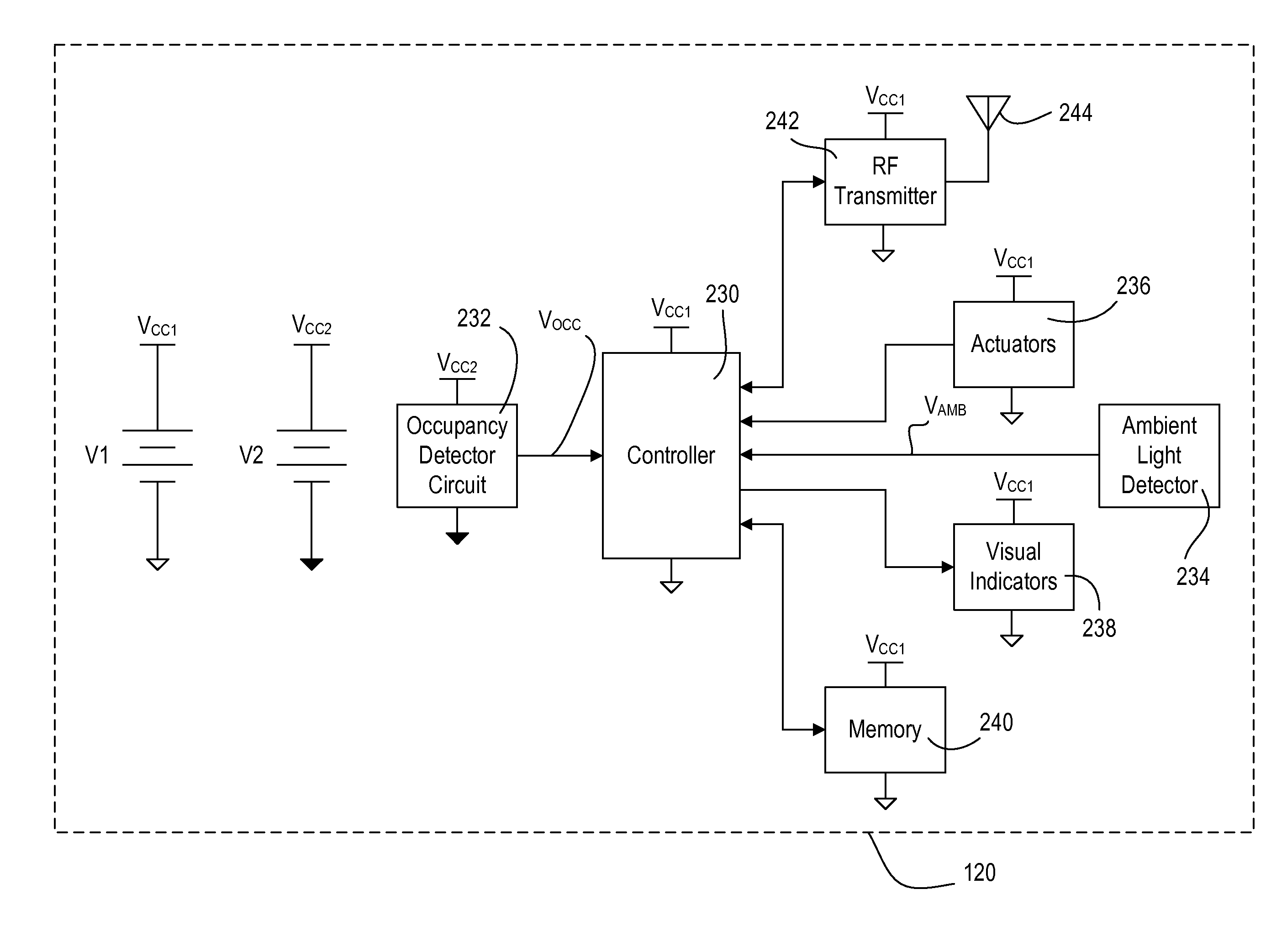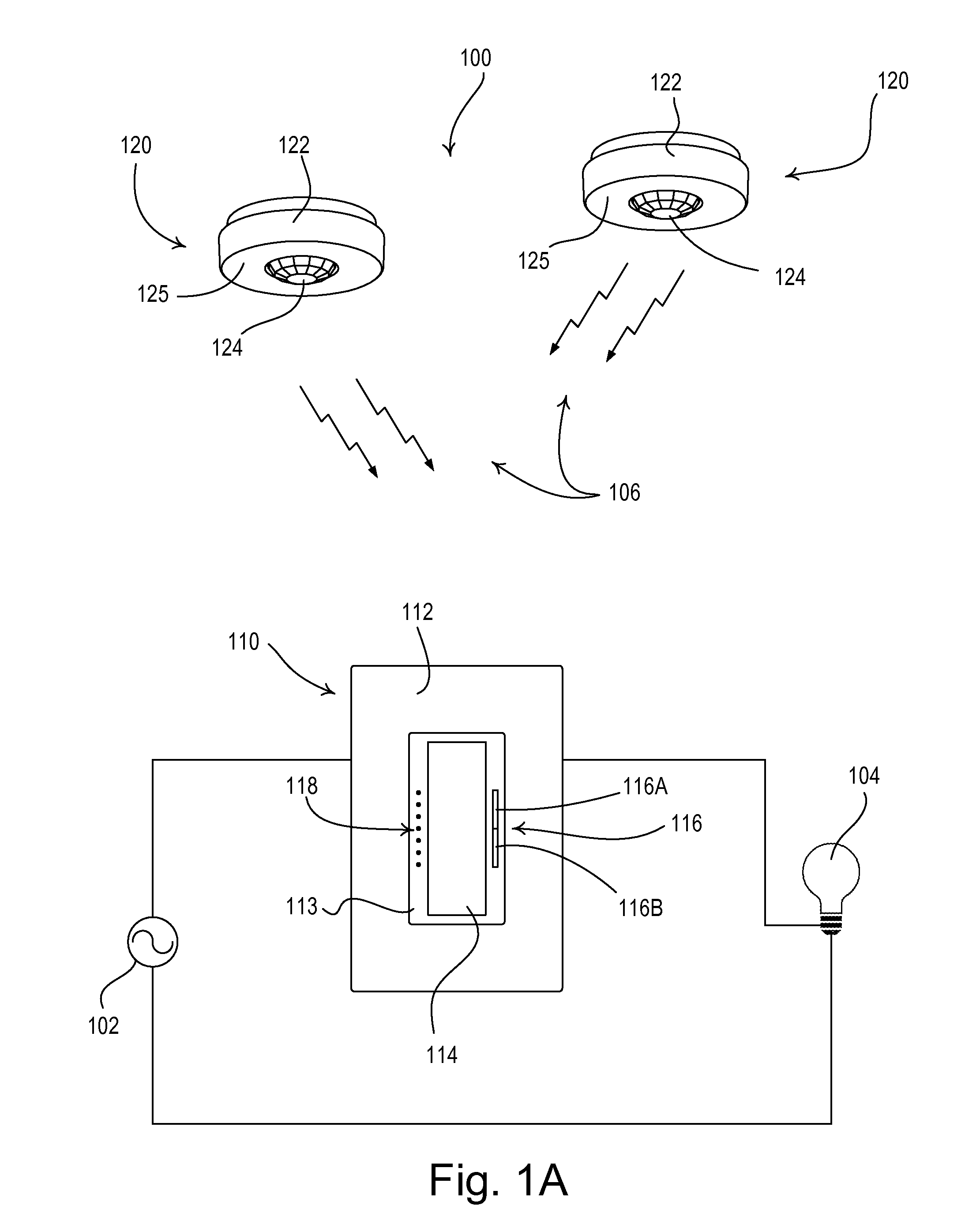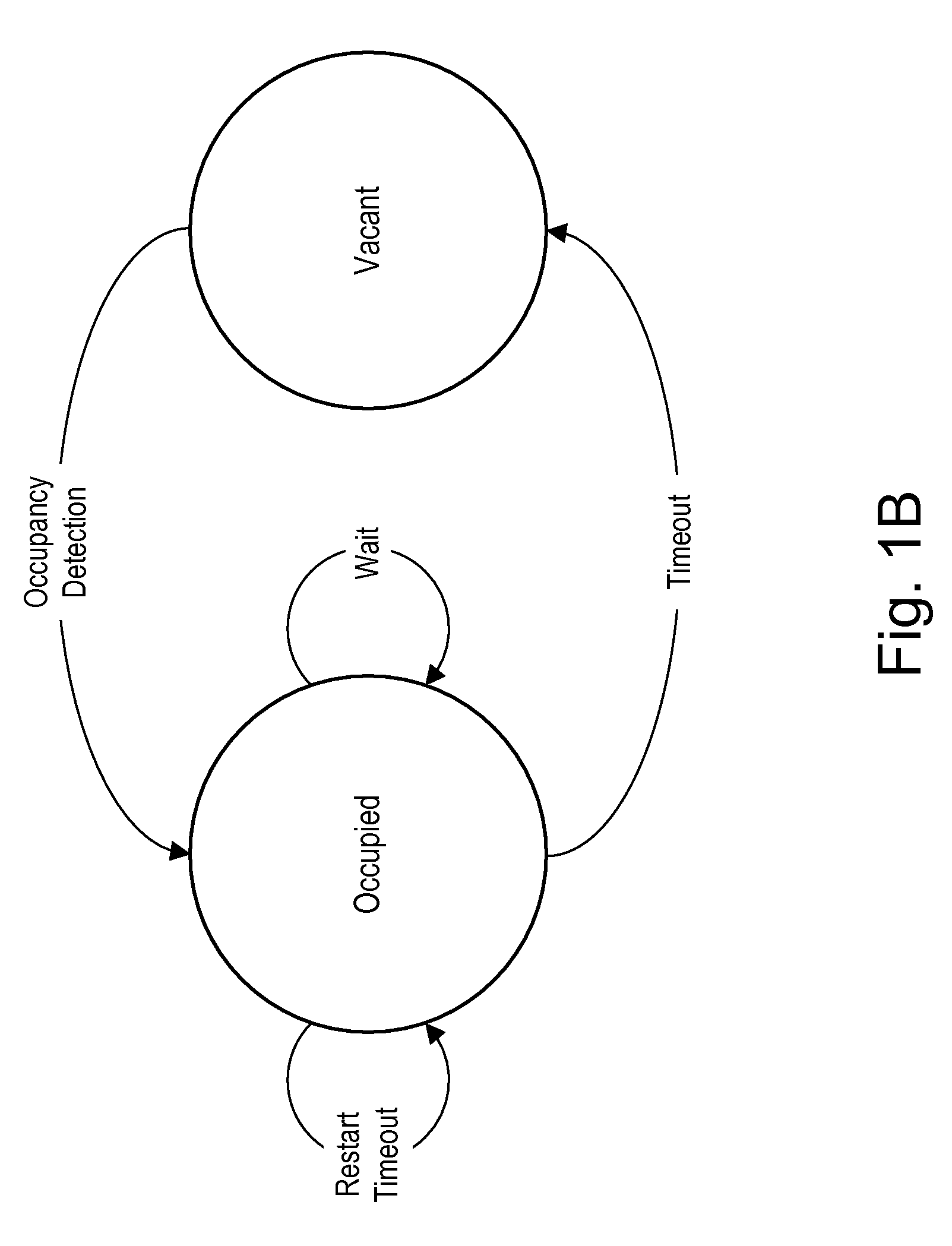Battery-powered occupancy sensor
a battery-powered occupancy sensor and occupancy sensor technology, applied in the direction of electric variable regulation, process and machine control, instruments, etc., can solve the problems of increasing the likelihood that the load control device may not detect the presence of a user, and the control system requires advanced system components and configuration procedures in order to operate properly
- Summary
- Abstract
- Description
- Claims
- Application Information
AI Technical Summary
Benefits of technology
Problems solved by technology
Method used
Image
Examples
first embodiment
[0058]According to the present invention, the occupancy sensors 120 are each operable to store in a memory 240 the values of the various operating characteristics of the lighting control system 100, e.g., the occupancy voltage threshold, the ambient light level threshold, and the occupancy sensor timeout period TTIMEOUT. The memory 240 may be implemented as an external integrated circuit (IC) or as an internal circuit of the controller 230. To adjust the values of the operating characteristics, the user must access the occupancy sensor 120 to actuate the actuators 236. The occupancy sensors 120 use the operating characteristics to change between the occupied state and the vacant state as will be described in greater detail below. The occupancy sensors 120 also store the serial number in the memory 240. The serial number may be programmed into the memory 240, for example, during manufacture of the occupancy sensor 120.
[0059]The remote occupancy sensor 120 further comprises an RF tran...
second embodiment
[0093]According to the present invention, the occupancy sensor 120 operates in a low-battery mode when the magnitude of the first battery voltage VCC1 drops below the low-battery voltage threshold VLOW. In the low-battery mode, the controller 230 halts the normal operation of the occupancy sensor 120 to conserve battery power. Specifically, the controller 230 does not transmit the occupied-take-action or occupied-no-action commands in response to determining that the room has become occupied, or transmit the vacant command in response to determining at the room has become vacant. In addition, the occupancy sensor 120 provides a visual indication of the low-battery condition by operating to illuminate the lens 124 only when the room first becomes occupied when in the low-battery mode. Accordingly, the lighting load 104 will not turn on, but the lens 124 of the occupancy sensor 120 will be illuminated only when an occupant first enters the space, thus notifying the occupant that the b...
third embodiment
[0098]According to the present invention, the dimmer switch 110 is operable to store in the memory 216 the values of the various operating characteristics of the lighting control system 100, e.g., the occupancy voltage threshold, the ambient light level threshold, and the occupancy sensor timeout period TTIMEOUT. The dimmer switch 110 may provide, for example, an advanced programming mode, such that the values of the operating characteristics may be adjusted in response to actuations of the toggle actuator 114 and the intensity adjustment actuator 116. An advanced programming mode is described in greater detail in U.S. Pat. No. 7,190,125, issued Mar. 13, 2007, entitled PROGRAMMABLE WALLBOX DIMMER, the entire disclosure of which is hereby incorporated by reference. Since the user does not need to access the occupancy sensors 120 (which may be mounted to a ceiling) to adjust the operating characteristics, the use of the toggle actuator 114 and the intensity adjustment actuator 116 of ...
PUM
 Login to View More
Login to View More Abstract
Description
Claims
Application Information
 Login to View More
Login to View More - R&D
- Intellectual Property
- Life Sciences
- Materials
- Tech Scout
- Unparalleled Data Quality
- Higher Quality Content
- 60% Fewer Hallucinations
Browse by: Latest US Patents, China's latest patents, Technical Efficacy Thesaurus, Application Domain, Technology Topic, Popular Technical Reports.
© 2025 PatSnap. All rights reserved.Legal|Privacy policy|Modern Slavery Act Transparency Statement|Sitemap|About US| Contact US: help@patsnap.com



